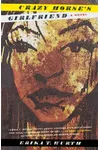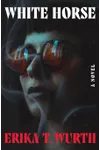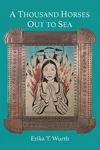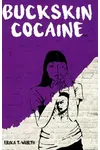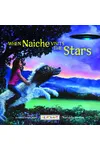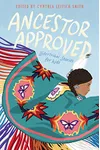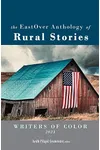Picture a Denver storyteller who weaves gritty urban tales with spine-chilling horror—meet Erika T. Wurth! An Indigenous author of Apache, Chickasaw, and Cherokee descent, Wurth has carved a bold path in contemporary literature. Her breakout novel, White Horse, blends heavy metal vibes, Stephen King-inspired scares, and urban Indian identity, earning her a spot as a New York Times editors’ pick and a voice for Indigenous storytelling.
With a Ph.D. and a professorship in creative writing, Wurth doesn’t just write—she mentors the next generation of writers while reshaping how Native experiences are portrayed. From dive bars to haunted hotels, her stories pulse with raw energy and cultural depth, making her a standout in the horror and literary fiction scenes.
The Making of Erika T. Wurth
Raised on the outskirts of Denver, Wurth grew up in a multi-tribal family with a complex history. Her Apache, Chickasaw, and Cherokee roots, combined with a childhood marked by personal trauma, shaped her unique perspective. As a self-professed horror geek, she devoured Stephen King novels and heavy metal music, finding solace in their dark, cathartic worlds. Wurth’s academic journey took her to Fort Lewis College for her undergraduate degree and the University of Colorado for her Ph.D., where she honed her craft. Her early career with small presses laid the groundwork for her bold, genre-bending voice.
Erika T. Wurth’s Unforgettable Stories
Wurth’s writing is a gritty cocktail of horror, realism, and Indigenous futurism, served with a side of urban edge. Her breakout novel, White Horse (2022), follows Kari James, a heavy-metal-loving urban Native haunted by her mother’s ghost and a monstrous entity. Set in a Denver dive bar, the story tackles missing and murdered Indigenous women (MMIW) while delivering jump scares and emotional depth. Critics, including Silvia Moreno-Garcia, praised its blend of classic horror and fresh Indigenous perspectives.
Earlier works like Crazy Horse’s Girlfriend (2014) explore Native American gangs and identity with raw realism, while Buckskin Cocaine (2017), a short story collection, dives into the chaotic lives of Indigenous artists. Her poetry collections, Indian Trains (2007) and A Thousand Horses Out to Sea (2016), weave lyrical reflections on heritage and displacement. Wurth’s upcoming novel, The Haunting of Room 904 (2025), promises more paranormal thrills, cementing her as a horror powerhouse.
Her style is unapologetic—think dive-bar grit meets Chickasaw folklore, with a nod to the Lofa, a creepy Bigfoot-like figure from tribal stories. Wurth’s work challenges stereotypes, centering urban Native voices and blending speculative elements with real-world issues like intergenerational trauma and cultural survival.
Why Erika T. Wurth Matters
Erika T. Wurth is more than a horror novelist—she’s a trailblazer for Indigenous literature. By spotlighting urban Indian experiences, she dismantles clichés and amplifies voices often ignored in mainstream fiction. Her work with Meow Wolf’s Denver installation, incorporating Native history and Indigenous futurism, shows her commitment to innovative storytelling. As a professor at Western Illinois University and a mentor at Regis University’s MFA program, Wurth inspires writers to embrace their authentic voices.
Her advocacy for diverse Native narratives—Black, Latinx, enrolled, or unenrolled—has helped spark a new wave of Indigenous authors like Stephen Graham Jones and Rebecca Roanhorse. Wurth’s stories resonate with readers seeking thrilling, culturally rich tales that don’t shy away from hard truths.
- Born: Denver, Colorado (exact date unavailable)
- Key Works: White Horse, Crazy Horse’s Girlfriend, Buckskin Cocaine
- Awards: Kenyon and Sewanee fellowships, finalist for Colorado Book Awards
- Fun Fact: Wurth designed a Meow Wolf room blending Native history and futurism!
Snag White Horse and dive into Erika T. Wurth’s thrilling, haunting world of urban Native horror!
